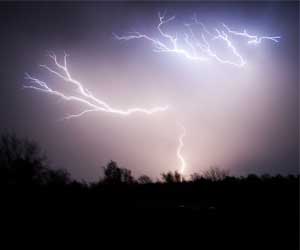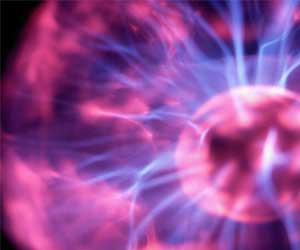Facts about Static Electricity
Posted by Admin / in Science Facts
Thses facts about static electricity help describe the beginnings of the study of electricity. Static electricity is a special case of electricity that is different from electrical power, from mechanical generators or batteries. People have seen lightning in the sky for many years, but have not always understood that lightning is actually static electricity. The study of electricity really began in 1660 with the invention of a static electricity producing machine created by a German scientist named Otto von Guericke. Find our more facts about static electricity.

Lightning is a powerful type of static electricity
Facts about Static Electricity
- In 1660 Otto von Guericke, who was known at the time for inventing an air pump to make a partial vacuum, invented a new machine that through friction generated static electricity. His invention became known as the electrostatic generator.
- Otto vo Guericke's invention was a breakthrough. Up to this point, scientists had no sure way of generating electricity for experimentations. Otto von Guericke's idea changed scientists access to electricity.
- The electrostatic generator was used for many years by scientists to experiment with electricity. Even though Alessandro Volta invented the chemical battery in 1800 capable of generating electricity, it was not until Michael Faraday invented the magnetic induction generator (turbine) in 1831, that scientists could generate as much voltage as the electrostatic generator (171 years!).
- In 1752 Ben Franklin developed a theory that lightning in the sky was the same as static electricity that was generated by rubbing a glass rod with cloth. The result is Ben Franklin's famous kite experiment. It is debated whether Franklin actually performed the experiment since it was so dangerous and he could have been killed. His theory was correct. Lightning is electricity, just like static electricity. In fact, lightning is static electricity which results from clouds rubbing together. An electrical charge leaves the cloud and connects to another cloud or the ground because of the unbalanced charges.
- Static electricity is different from electricity created by a turbine or from a chemical battery.
- Electricity is the flow of atoms. In the case of static electricity, there are unbalanced positive and negative charges. When an electrical connection is made between the unbalanced charges, atoms move quickly to balance the charge resulting in static electricity.
- Since there is a high difference between charges, generating static electricity can result in a high voltage.
- Static electricity does not generally result in a high current, unless it is a large-scale static event such as lightning.
- Positive charge static electricity is created by rubbing silk on a glass rod.
- Negative charge static electricity is produced by rubbing fur on a plastic, amber or rubber rod.
- Like all types of electricity, static electricity travels at light speed (186,282 miles per second) (299,792,458 meters per second).
- Other famous static electricity devices include the Wimshurst electrostatic generator (developed around 1882), the Bonetti electrostatic machine (1894), and the Van de Graaff generator which is commonly used in most science museum static electricity demonstrations (1929)
- Experiment with an easy science experiment called "static electricity experiment with ballooons".
- Try using static electricity to power a light bulb.

A visual demonstration of static electricity generated with a device similar to a Van de Graaff electrostatic generator.
